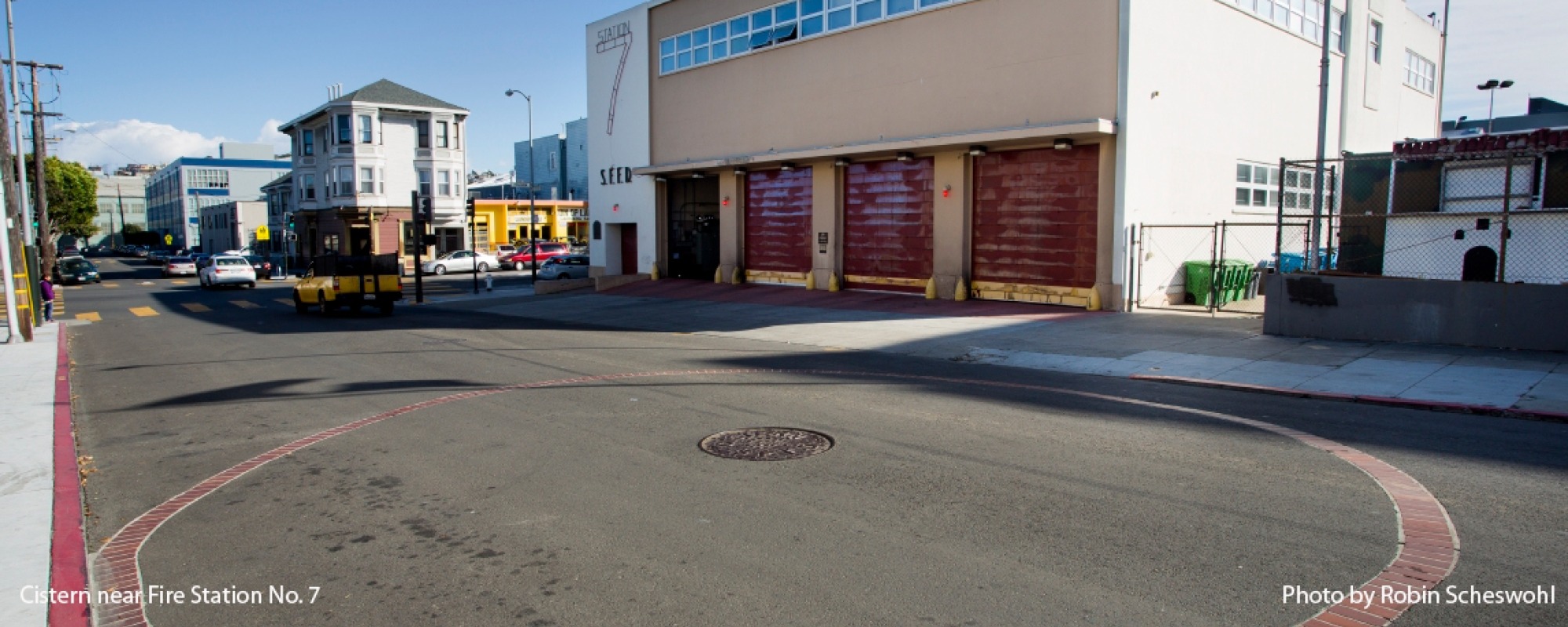Emergency Firefighting Water System
The Emergency Firefighting Water System – officially called the Auxiliary Water Supply System (AWSS) – is an independent high-pressure water supply system dedicated to fire protection. It was built in 1913 in response to the 1906 Great Earthquake. It consists of a 135-mile pipeline network, a high-elevation reservoir and two large-capacity tanks, two pumping stations, fireboats, underground water tanks (cisterns) and Bay water intakes (suction connections). The emergency firefighting water system has unique capabilities, including the ability to deliver water at much higher pressures and the ability to use unlimited water from the Bay. The system and its core facilities are currently used throughout the year by the San Francisco Fire Department to fight multiple alarm fires.
The elements of the emergency firefighting water system that provide pressurized water to the system, called core facilities, are extremely run down. Inspections and assessments of core facilities show deterioration, seismic deficiencies, and corrosion due to rust, poor foundations, leakages, and outdated technologies. ESER 2010 worked to improve and seismically upgrade the emergency firefighting water system core facilities, cisterns and pipes and tunnels.
ESER 2010 provided $102.4 million to improve two pump stations, two storage tanks, the primary reservoir, as well as associated cisterns and a portion of the pipe network and tunnels.
The $102.4 million in ESER 2010 improvements are budgeted as follows:
- Cisterns: $36 million
- Pipe Network and Tunnels: $32 million
- Emergency Firefighting Water System Core Facilities: $34.4 million
The initial funding targeted improvements to cisterns, pipelines, tunnels and five core facilities: the Twin Peaks Reservoir, Ashbury Heights Tank, Jones Street Tank, Pump Station No. 1 in the South of Market neighborhood and Pump Station No. 2 at Fort Mason.
Cisterns: Approximately 30 new cisterns were constructed with funding from ESER 2010. A contract for construction of the first six cisterns began in summer 2013; a second contract for five more cisterns began in fall 2013 and a third contract for an additional five cisterns started in spring 2014. Design work was done for renovations or construction of approximately 14 additional cisterns
Pipelines and tunnels: Planning work was done for nine pipeline and tunnel projects. These projects investigated the condition of the existing Emergency Firefighting Water System pipelines, repair pipes and fire connections, repaired a seawater intake tunnel, provided new water supply, motorized critical valves for remote control and improved the electronic control system.
Core facilities: Construction began in the fall of 2013 to replace water valves and piping and to perform concrete repairs at the Twin Peaks Reservoir. At the Ashbury Heights Tank, a 500,000-gallon water storage tank and piping were replaced. Work took place at the Jones Street Tank to strengthen the tank foundation, the walls and roof, replace valves and piping and refurbish the valve-house roof. Design work was done to replace four diesel engines that turn seawater pumps, and replace ventilation, controls and piping at Pump Station 1. Design work was also done to seismically strengthen the building structure and replace the roof at Pump Station 2.
For descriptive information about this component of the bond, visit the Emergency Firefighting Water System webpage maintained by the San Francisco Public Utilities Commission.
Explore the other ESER 2010 Bond Components
What is the ESER bond program?
Earthquake Safety and Emergency Response (ESER) is San Francisco's bond program to strategically address critical public safety needs in the City. The program identifies seismic improvements and upgrades to City-owned facilities that are needed to help safeguard San Francisco. Learn more here.




